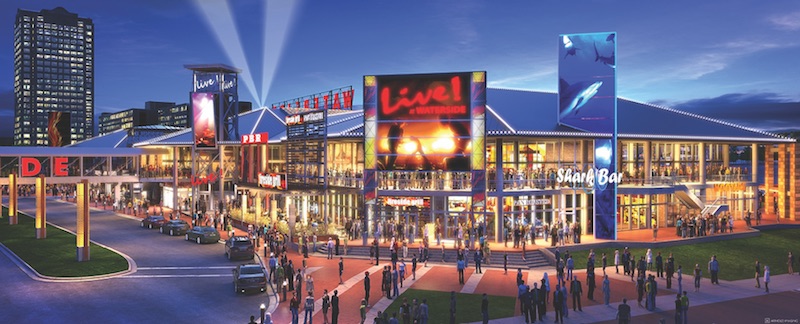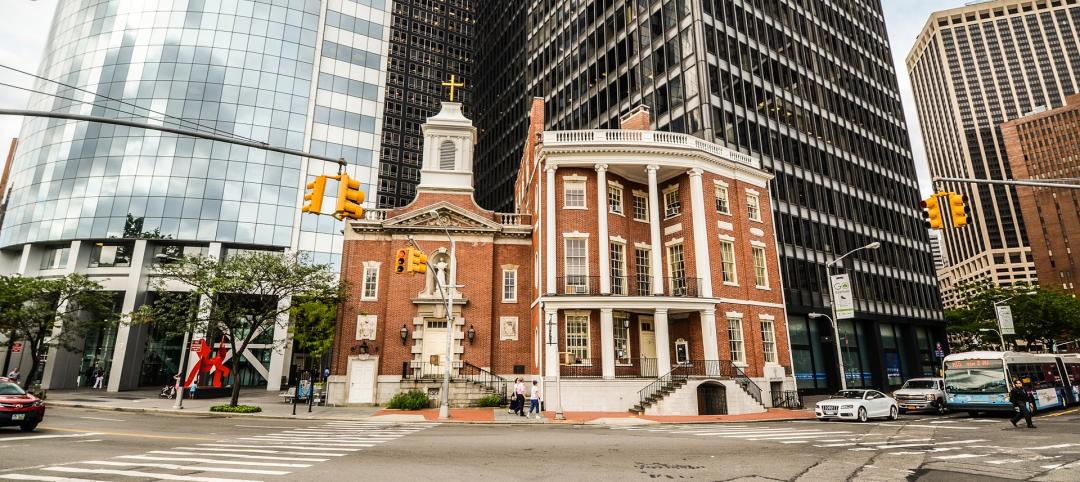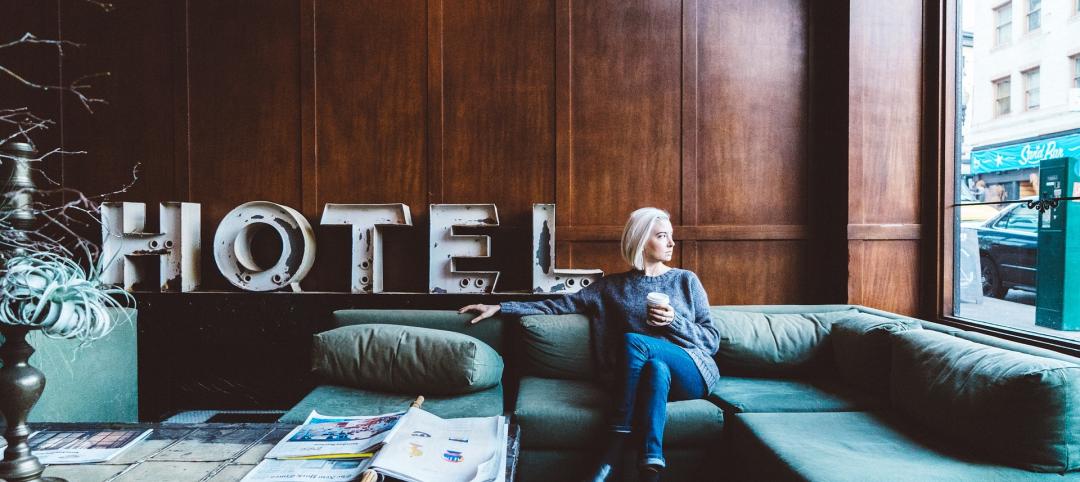E-commerce is reshaping the landscape for traditional retailers. Store closures and consolidations in 2017 are on pace to eclipse the total number of stores that failed in 2008, in the depths of the Great Recession. Just two months ago, Credit Suisse forecasted that 20-25% of malls will close by 2022.
Eric Lagerberg, AIA, NCARB, LEED AP, EVP and Global Practice Group Leader, Retail Stores at CallisonRTKL, says, “In five years, it is likely that most, if not all, of the most recognized brands will have undergone a marked transformation in how they conduct business, capture consumers’ loyalties, and sell their products. From the mechanics of the transaction and the supply chain behind it to the physical environment and experience within it, nothing will be as it currently is.”
This market volatility is compelling retailers to replace traditional merchandising and marketing approaches with strategies that enable the store environment to engage with customers in ways online retailers can’t.
“Savvy retailers are using in-store programming to create opportunities for education, community connection, and other activation strategies as a means to get customers to connect with the brand,” says Aaron Birney, LEED AP, Firmwide Retail Practice Area Leader with Gensler.
NYX Cosmetics equips its headquarters office and retail stores with studio environments to activate trend-savvy customers. “By hosting events and seminars by well-known cosmetics artists and industry video bloggers, they have created an amazing following with younger, more progressive users,” says Birney.
Technology is enabling retailers to create hands-on experiences that can only take place in a physical store environment. New Balance features an interactive demonstration and shoe-making assembly area in its flagship Boston store, designed by Elkus Manfredi Architects. At the retailer’s NB1 Customization Bars, customers can review color and material swatches and use iPads to design their own shoes, then watch them being made right in front of them. “This immersive experience seamlessly integrates a technology-driven digital experience with a tried-and-true, hands-on shopping experience,” says Greg Skalaski, Vice President, Retail, Shawmut Design and Construction.
Even e-commerce retailers are experimenting with physical environments. Amazon has opened a handful of bookstores in major cities and is toying with grocery and convenience store formats, as well as pop-up stores and kiosks at shopping malls.
 Mixed-use sports and entertainment districts like Waterside Live! in Norfolk, Va., provide a strong foundation for adjacent retail. These mixed-use developments integrate retail, restaurant, and green space to create high-impact destinations for sports fans and tourists. The Cordish Companies.
Mixed-use sports and entertainment districts like Waterside Live! in Norfolk, Va., provide a strong foundation for adjacent retail. These mixed-use developments integrate retail, restaurant, and green space to create high-impact destinations for sports fans and tourists. The Cordish Companies.
CONSUMERS STILL PREFER PHYSICAL STORES
E-commerce accounts for less than 10% of total retail sales, although it continues to expand exponentially. Still, according to recent research by Cowen Group, consumers prefer shopping in physical stores 75% of the time. And despite persistent reports of failure, many Class A malls are still thriving.
Retail owner/operator GGP is moving ahead with The SoNo Collection, an upscale shopping center in Norwalk, Conn., anchored by Nordstrom and Bloomingdale’s, with 80 to 100 smaller lessees. In downtown Miami, the 10-block Miami Worldcenter mixed-use development under construction will give special billing to a high-street retail component developed by The Forbes Company and Taubman.
Urban sports venues continue to provide a strong foundation for adjacent retail. The Cordish Companies has engaged FRCH’s retail mixed-use studio to design sporting and entertainment districts in Philadelphia, Detroit, Cleveland, Atlanta, and Norfolk, Va. These mixed-use developments integrate retail, restaurant, and green space to create high-impact destinations for sports fans and tourists.
There’s also growing interest in adaptive reuse, as developers recognize the benefits of conserving and reimagining historic structures. In Chattanooga, Tenn., The Woodbery Group is redeveloping a 1916 textile manufacturing facility into Signal Mill, an urban retail, restaurant, and office development. Hefferlin + Kronenberg Architects and builder EMJ Corp. are repurposing the building’s first and second floors to accommodate boutiques, specialty food shops, and restaurants.
Outdoor retail cooperative REI chose the long-vacant Uline Arena as the location of its flagship Washington, D.C., store, designed by CallisonRTKL. REI was the first tenant in the redeveloped historic brick masonry structure, which now houses 244,000 sf of office and retail space.
Also See: BD+C Giants 300 retail rankings
Top 65 retail architecture firms
Top 40 retail engineering firms
Top 75 retail construction firms
Regardless of a store’s size, location, or format, retailers remain focused on connecting with customers to build and sustain brand loyalty. “We view retail as a form of hospitality—any environment that caters to the customer, anticipating their needs, shifting behavior, and evolving sense of the world,” says MJ Munsell, IIDA, Principal and Retail Studio Leader with MG2.
Gensler’s Birney believes the competitive landscape for retailers has never been more formidable. “Retailers are no longer just competing with other retailers. They’re competing with anything people might do in their free time: spending an afternoon at a museum, seeing live entertainment, or eating a great meal,” he says.
He advises traditional retailers to “connect with audiences in more meaningful ways” by embracing the idea of their store as “a platform for multiple means of engagement and community building.”
SEE ALL 2017 GIANTS 300 RANKINGS
Related Stories
Giants 400 | Jan 3, 2022
2021 Religious Sector Giants: Top architecture, engineering, and construction firms in the U.S. religious facility construction sector, as reported in the 2021 Giants 400 Report
Gensler, KPFF, Crossland Construction, and Rogers-O'Brien Construction head BD+C's rankings of the nation's largest religious facility sector architecture, engineering, and construction firms, as reported in the 2021 Giants 400 Report.
Giants 400 | Jan 3, 2022
2021 Government Sector Giants: Top architecture, engineering, and construction firms in the U.S. government buildings sector
Stantec, Jacobs, Turner Construction, and Hensel Phelps top BD+C's rankings of the nation's largest government sector architecture, engineering, and construction firms, as reported in the 2021 Giants 400 Report.
Giants 400 | Dec 31, 2021
2021 Science and Technology Sector Giants: Top architecture, engineering, and construction firms in the U.S. S+T facilities sector
HDR, CRB, Jacobs, Skanska USA, and Whiting-Turner Contracting Co. top the rankings of the nation's largest science and technology (S+T) sector architecture, engineering, and construction firms, as reported in the 2021 Giants 400 Report.
Giants 400 | Dec 5, 2021
2021 Reconstruction Sector Giants: Top architecture, engineering, and construction firms in the U.S. building reconstruction and renovation sector
STO Building Group, Alfa Tech Consulting Engineers, Gensler, and Stantec top BD+C's rankings of the nation's largest reconstruction sector architecture, engineering, and construction firms, as reported in the 2021 Giants 400 Report.
Giants 400 | Dec 5, 2021
2021 Telecommunications Facility Sector Giants: Top architecture, engineering, and construction firms in the U.S. telecommunications facility sector
Alfa Tech Consulting Engineers, AECOM, Kimley-Horn, and BRPH head BD+C's rankings of the nation's largest telecommunications facility sector architecture, engineering, and construction firms, as reported in the 2021 Giants 400 Report.
Giants 400 | Dec 5, 2021
2021 Justice Facility Sector Giants: Top architecture, engineering, and construction firms in the U.S. justice facility/public safety sector
Turner Construction, DLR Group, AECOM, and Stantec top BD+C's rankings of the nation's largest architecture, engineering, and construction firms for justice facility/public safety buildings work, including correctional facilities, fire stations, jails, police stations, and prisons, as reported in the 2021 Giants 400 Report.
Giants 400 | Dec 3, 2021
2021 Hotel Sector Giants: Top architecture, engineering, and construction firms in the U.S. hospitality sector
Gensler, Jacobs, Suffolk Construction, and WATG top BD+C's rankings of the nation's largest hotel sector architecture, engineering, and construction firms, as reported in the 2021 Giants 400 Report.
Giants 400 | Nov 20, 2021
2021 Transit Facility Giants: Top architecture, engineering, and construction firms in the U.S. transit facility sector
Perkins and Will, Walsh Group, AECOM, and HDR top BD+C's rankings of the nation's largest transit facility sector architecture, engineering, and construction firms, as reported in the 2021 Giants 400 Report.
Giants 400 | Nov 20, 2021
2021 Parking Structure Giants: Top architecture, engineering, and construction firms in the U.S. parking structure sector
PGAL, PCL Construction, and Wiss, Janney, Elstner Associates top BD+C's rankings of the nation's largest parking structure sector architecture, engineering, and construction firms, as reported in the 2021 Giants 400 Report.
Giants 400 | Nov 20, 2021
Top 10 Integrated Project Delivery (IPD) Construction Firms for 2021
Gilbane, BartonMalow, Whiting-Turner, and Hensel Phelps head the rankings of the nation's largest integrated project delivery (IPD) construction firms for buildings construction work, according to BD+C's 2021 Giants 400 Report.

















